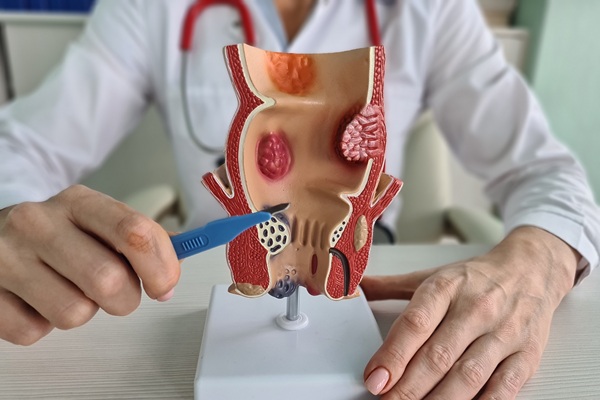Aortic AneurysmOrange, CA
Aortic aneurysms are a sneaky but serious condition that must be treated as soon as possible. This may be because most people go without getting screened because they are unaware of the dangers of this condition. Fortunately, our team of medical professionals can screen for the aneurysm, provide treatment, and schedule any necessary follow-up care.
Vascular and Interventional Specialists of Orange County offer multiple treatment options for this condition. To schedule a screening or learn more, call us today at 714-598-1194.
What is an aortic aneurysm?
An aortic aneurysm is a condition that occurs when the wall of the aorta, the body's largest artery, becomes weakened and enlarged. In most cases, aneurysms are treatable with surgery to prevent rupture or death. It is usually asymptomatic while small but can lead to serious problems if left untreated.
Aneurysms tend to form near areas where arteries branch off from another, called branching points. These branching points may weaken after certain surgeries, including clamps to control bleeding during the procedure. In addition, aortic aneurysms can result from degenerative changes, infections, atherosclerosis, blunt force trauma, and genetic predisposal.
Check out what others are saying about our Aortic Aneurysm services on Yelp: Aortic Aneurysm Orange
Signs and Symptoms
The symptoms of an abdominal aortic aneurysm vary depending on the size and location. The most common signs and symptoms are pain and a pulsatile sensation in the abdomen. Patients have described pain in the chest, back, or upper abdomen while also feeling a continuous dull ache or cramp extending beyond the shoulder blades before radiating down one arm. This symptom may worsen with activity such as lifting or bending over but usually gets better while laying down.
A pulsatile sensation in the abdomen may occur during every heartbeat or about 70 beats per minute. This sensation is similar to a heart rate increase during a workout. It results from blood rushing through the weakened area within the patient's abdominal wall where an expanding aneurysm has stretched out an aortic artery.
A non-pulsatile sensation in the abdomen occurs continuously, without any variations related to heartbeats. This type of pain tends to feel like the ache the patient experiences during indigestion or passing gas. In addition, patients also may experience the following:
- Nausea and vomiting
- Rapid heartbeat
- Dizziness when standing up quickly
- Vertigo (Lightheadedness)
Diagnosis and Testing
During the patient's first appointment, we will review their medical history and symptoms before performing several tests, including a chest X-ray, C-reactive protein test, electrocardiogram (ECG), transesophageal echocardiography, and CT scan or MRI scan.
Generally, it is recommended for patients over the age of 65 to get an annual screening, typically conducted by their primary care provider, to check for aneurysms that may be asymptomatic. Additionally, it is highly recommended for screening if the patient is 65 or older with a history of smoking or is genetically predisposed to aortic aneurysms.
Treatment Options
Treatment options include medication, lifestyle changes, and surgery. Taking medicines like Aspirin and lifestyle changes such as smoking and alcohol cessation are ideal since the substances tend to slow down the healing process. However, note that medications and lifestyle changes will not consistently work well over long periods. Therefore, the doctor may suggest endovascular thoracic aortic aneurysm repair surgery or open surgical repair.
Endovascular Thoracic Aortic Aneurysm Repair Surgery (EVTAAR) is done through large blood vessels in the groin or wrist using catheters (tubes) inserted into arteries that have been temporarily opened with tiny devices called balloons. During EVTAAR, the surgeon will use a tiny tool to put mesh patches over weakened areas inside the aorta. They will then connect metal stents to those patches so they can help keep open blood vessels that were damaged by weak spots.
Open surgical repair is the standard procedure for aortic aneurysm repair. It involves making a large incision across the patient's chest or abdomen so that the surgeon can access the damaged area inside the body. They will then use a tool called a graft to go in and repair the aneurysm.
Follow-up Care
After the patient's procedure, they must follow the doctor's instructions about their medication and rest time. They may also recommend patients start a healthier diet that includes fruits, vegetables, and low-fat dairy products. Also, incorporating beans, soy products, and lean protein will help with preventative care. Since every patient is unique, they should inquire about which exercise and activities are safe after their procedure.
Frequently Asked Questions
Will my insurance cover either procedure?
Coverage depends on your insurance plan. Confer with your provider about aortic aneurysm treatment options and their stipulations regarding the recommended procedure. Alternatively, you may contact our office to discuss finance options
How often should I be screened?
Since aortic aneurysms can be asymptomatic, it is recommended that patients request an annual screening after the age of 65, after receiving trauma, if they are a smoker, or have recently had an infection. Also, if a relative has been diagnosed with an aneurysm and needs corrective surgery, it is good to request a screening.
How do I know if I qualify for either procedure?
Before a procedure type and date are set, patients must schedule an appointment with our office. There they will be officially diagnosed through our screening process. Our specialist will inform the patient if they make a good candidate for either procedure.
What happens if I do not qualify?
If a patient does not qualify, we have an entire team of specialists that may advise alternative treatment options. The good news is not all aortic aneurysms require immediate surgery. Therefore, our team may craft a treatment plan that does not require a procedure to get the condition under control.
What are the risks of each procedure?
There are risks with any procedure, especially with elderly patients who may have additional health conditions. That is why patients must go through a careful screening process. Still, potential side effects you should be aware of include: bleeding during surgery, heart attack, irregular heartbeat, loss of blood flow to feet and legs, blood clots, infection of the graft, and damage to surrounding organs. The specialist will make you aware of any other potential risks.
Call Us Today
Aortic aneurysms are serious conditions that can lead to death if left untreated. According to the CDC, aortic aneurysms or aortic dissections were the cause of 9,904 deaths in 2019. Vascular and Interventional Specialists of Orange County is a medical center for advanced and complex aortic aneurysms that is working hard to turn these numbers around. To learn more about our services or to schedule an appointment, call us today at 714-598-1194.
Vascular & Interventional Specialists of Orange County is located at 1010 W La Veta Ave Suite 320 Orange, CA 92868.





